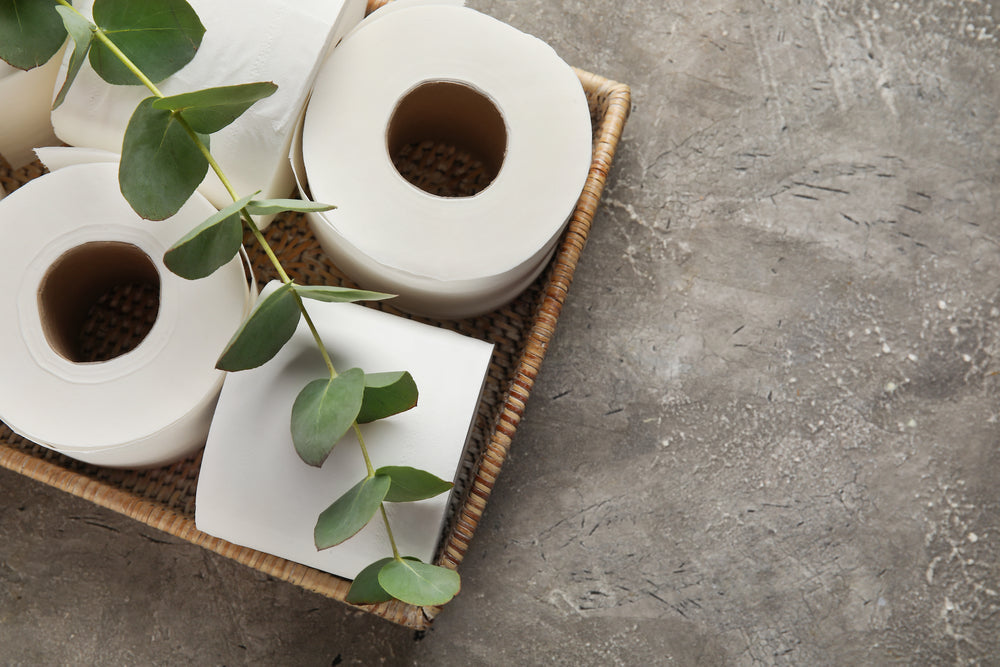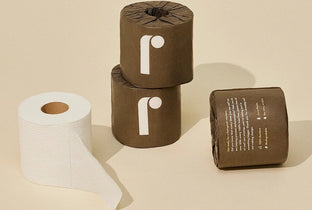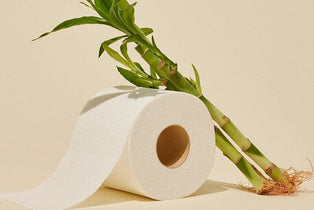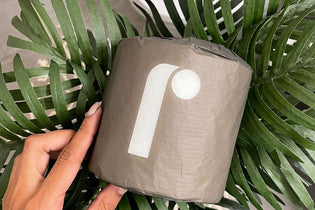
TLDR
You may have passed it in the aisle at your local grocery store or convenience store. When you hear it at first, “recycled toilet paper” or “recycled paper towels,”it sounds a little gross. Fortunately, recycled toilet paper isn’t actually made from unused, regular toilet paper, but is actually made from other recycled paper such as office paper.
How is paper recycled? It starts with correctly sorting paper products like printer paper, wrapping paper, and magazines at home. Then, it gets taken to a paper recycling facility to sort the items that are deemed quality enough to be reused. Products like used napkins or greasy pizza boxes cannot be recycled, among other used items. Practicing how to recycle paper the right way ensures that we’re doing our part to reduce paper consumption and reuse it in meaningful ways.
Now that we have covered the biggest fear about recycled toilet paper, let’s take a closer look at recycled toilet paper and see how it is made.
What is recycled toilet paper made from?
As mentioned above, recycled toilet paper can be made from things like office paper, toilet paper rolls, and other paper byproducts. The two groups of recycled paper fibers usually fall under post-consumer materials and pre-consumer materials.
Post-consumer materials
This is the category that papers such as office papers, school papers, newspapers, etc. fall under. Paper materials that made it into everyday life and instead of being thrown away were recycled - giving them a second lifespan and resulting in zero waste.
Pre-consumer materials
This category of paper normally comes as a byproduct of some form of paper or wood manufacturing. In almost any manufacturing process, there are trimmings or waste that occurs when making the final product. These trimmings or waste can be turned into paper pulp or mixed together if already pulp to create toilet paper or other household paper products.
If you see a recycled toilet paper product online or in the store - have a look at the packaging. You will likely see a claim on the packaging for a percentage breakdown of the product - letting you know how much of it is made from pre-consumer materials or post-consumer materials.

What types of paper can be recycled?
When it comes to recycling, our first note is always to check with your local government or recycling company to confirm exactly what types of products can be recycled and how to do it properly. Almost every town or collection point has different rules when it comes to certain items, and paper is no different.
That being said, in most cases, - office paper, cardboard, computer paper, magazines, books, and newspapers can be recycled. For any of these items, if they have been soiled or contaminated for any reason, they would no longer fit the requirements for recycling and would need to be thrown in the trash. Which leads us to our next question: are toilet paper rolls recyclable? If it’s unused, then it’s qualified to be recycled as a cardboard material!
One way a product can be soiled or contaminated is if it is with food waste - such as pizza boxes. This is actually a great example - because many times the top of the pizza box is recyclable since it doesn’t come in contact with the pizza, but the bottom of the box is not recyclable because the pizza sits on it. Other paper items that cannot be recycled are - coated and treated paper, thermal paper, stickers, and waxed paper.
If the wrong type of paper materials are recycled and get into the recycled bales of paper, it can be a big problem, and has even led to certain paper products testing positive for containing BPA.
How does this happen? BPA can be found in thermal paper, such as receipts, or other paper products such as shipping labels or lottery tickets. These paper items are incorrectly recycled and then missed when sorting the paper products and making the large bales of paper.
This is why it is very important to read the labels of the paper products you are buying and to buy from reputable companies. This is definitely something that can be avoided and can be tested for, so make sure that you look for paper products that are BPA-free when purchasing.

How is recycled toilet paper made?
There may be a few additional or slightly altered steps depending on the materials or machinery being used to make the recycled paper. However, the process usually starts with large bales of recycled paper that are put into the pulping machine to turn them into pulp. To make this happen - the paper is mixed with lukewarm water to start transforming the fibers.
Since there can be all sorts of different types of paper in the bales, you need to clean them up. Part of that process is removing the ink that was on any of the recycled material from the pulp. To do this, the pulp is injected with air to drain the ink, which then floats to the top of the surface. Once the ink has all risen to the top, it is skimmed off and removed from the paper for good.
The pulp is then dried out either by using rollers or more advanced technology that air dries the pulp. Once dried, the paper is normally bleached using different bleaching methods. We highly suggest researching what type of bleaching method your paper uses. This isn’t always the case though, some toilet tissue will be unbleached as well.
Once the paper is bleached it is then rolled into a large parent toilet paper roll, where it can be embossed. By embossing the paper you are creating different patterns or waves in the paper that make it better for cleaning and absorbency.
Going Green at Home With Reel Paper
There is a lot that goes into making recycled TP, but what if you have a lot of paper around the house? Can you make eco-friendly toilet paper by yourself? . We are always looking for DIY projects or products, and it is possible. Or, you can explore our bamboo toilet paper and recycled paper towels that are plastic- and BPA-free, with no unnecessary inks or dyes.
Our tree-free paper products will continue the cycle of reducing paper consumption. Once you’re done with a roll, toss the toilet paper roll and packaging box in the recycling bin so we can start the process all over again!



0 comments